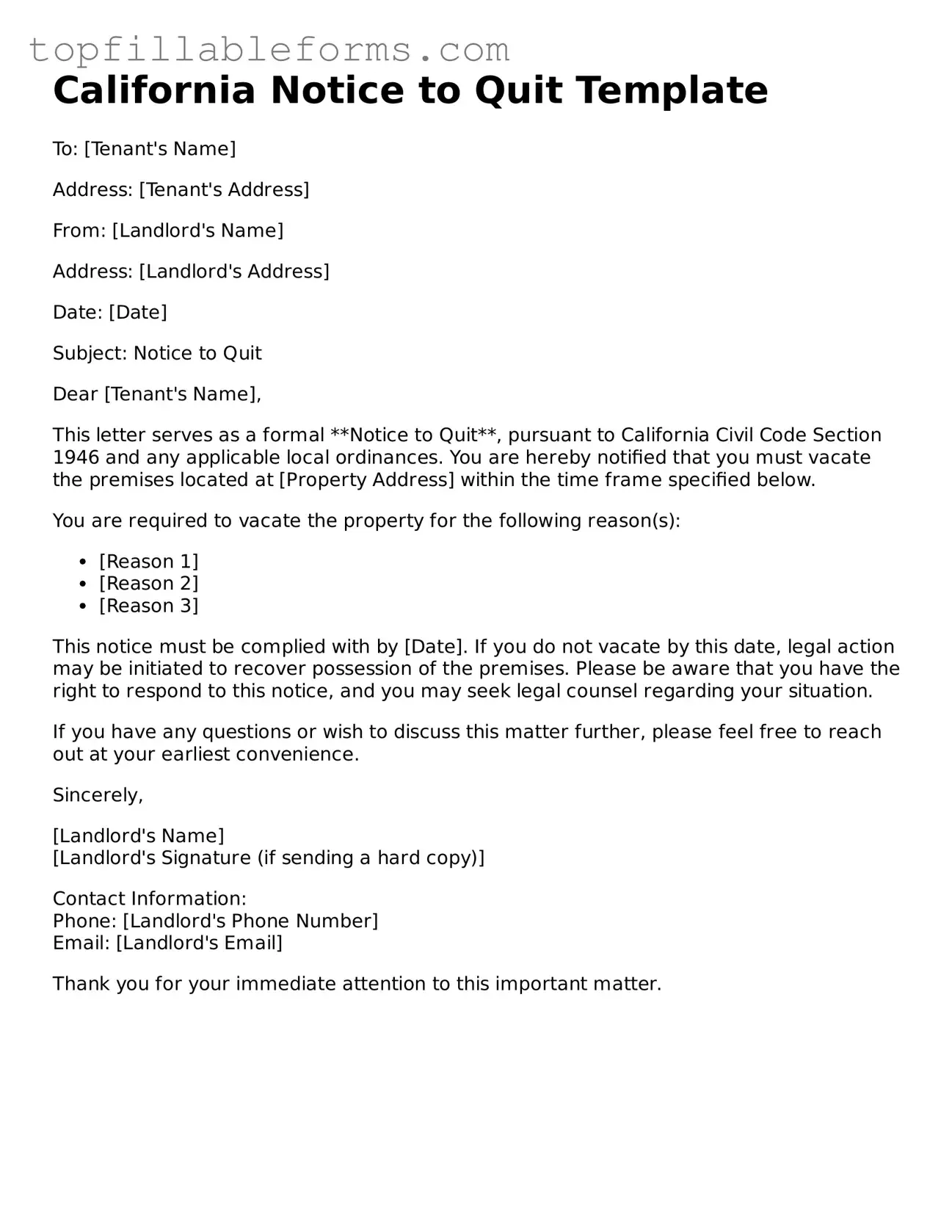California Notice to Quit Template
To: [Tenant's Name]
Address: [Tenant's Address]
From: [Landlord's Name]
Address: [Landlord's Address]
Date: [Date]
Subject: Notice to Quit
Dear [Tenant's Name],
This letter serves as a formal **Notice to Quit**, pursuant to California Civil Code Section 1946 and any applicable local ordinances. You are hereby notified that you must vacate the premises located at [Property Address] within the time frame specified below.
You are required to vacate the property for the following reason(s):
- [Reason 1]
- [Reason 2]
- [Reason 3]
This notice must be complied with by [Date]. If you do not vacate by this date, legal action may be initiated to recover possession of the premises. Please be aware that you have the right to respond to this notice, and you may seek legal counsel regarding your situation.
If you have any questions or wish to discuss this matter further, please feel free to reach out at your earliest convenience.
Sincerely,
[Landlord's Name]
[Landlord's Signature (if sending a hard copy)]
Contact Information:
Phone: [Landlord's Phone Number]
Email: [Landlord's Email]
Thank you for your immediate attention to this important matter.
